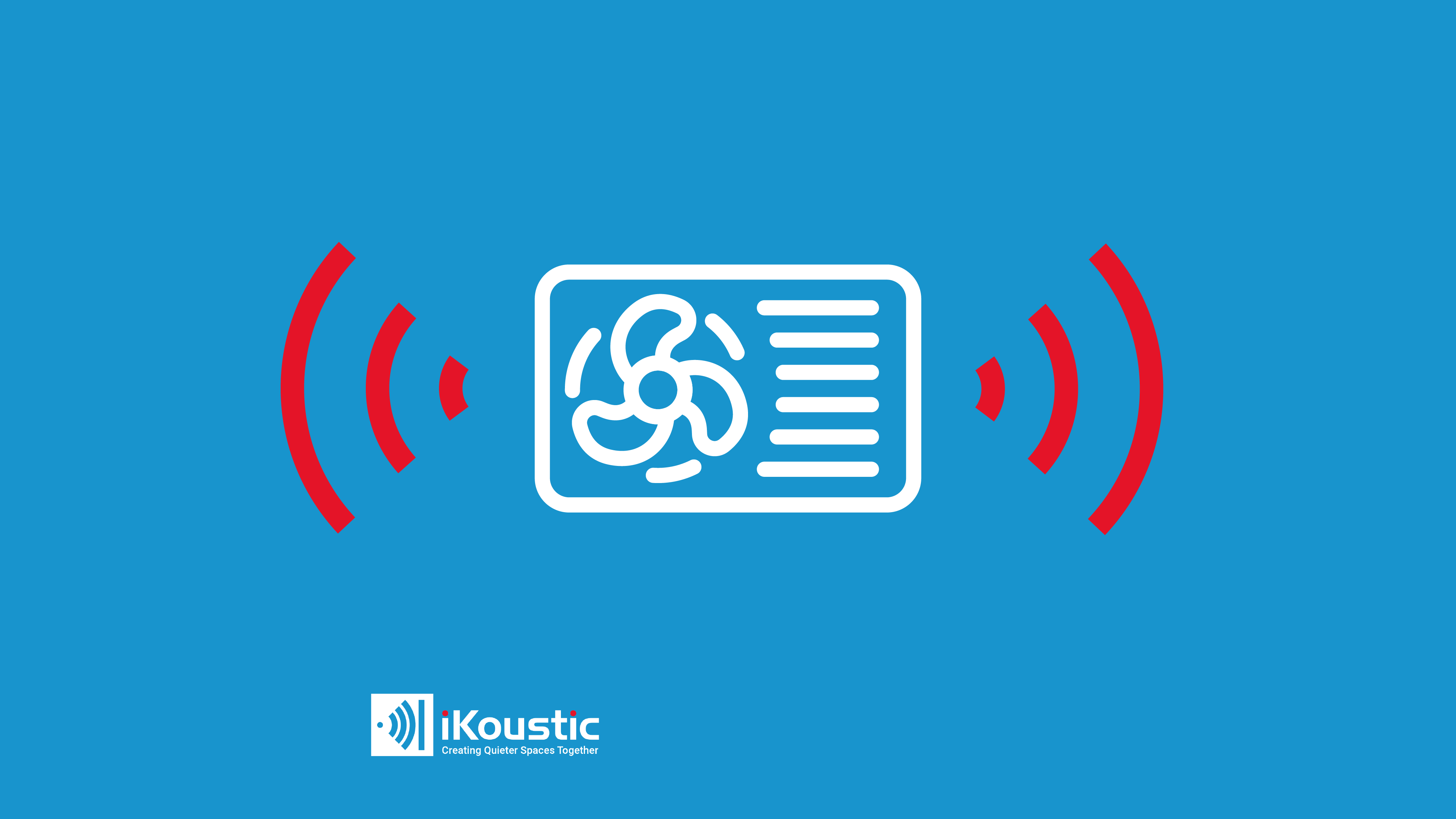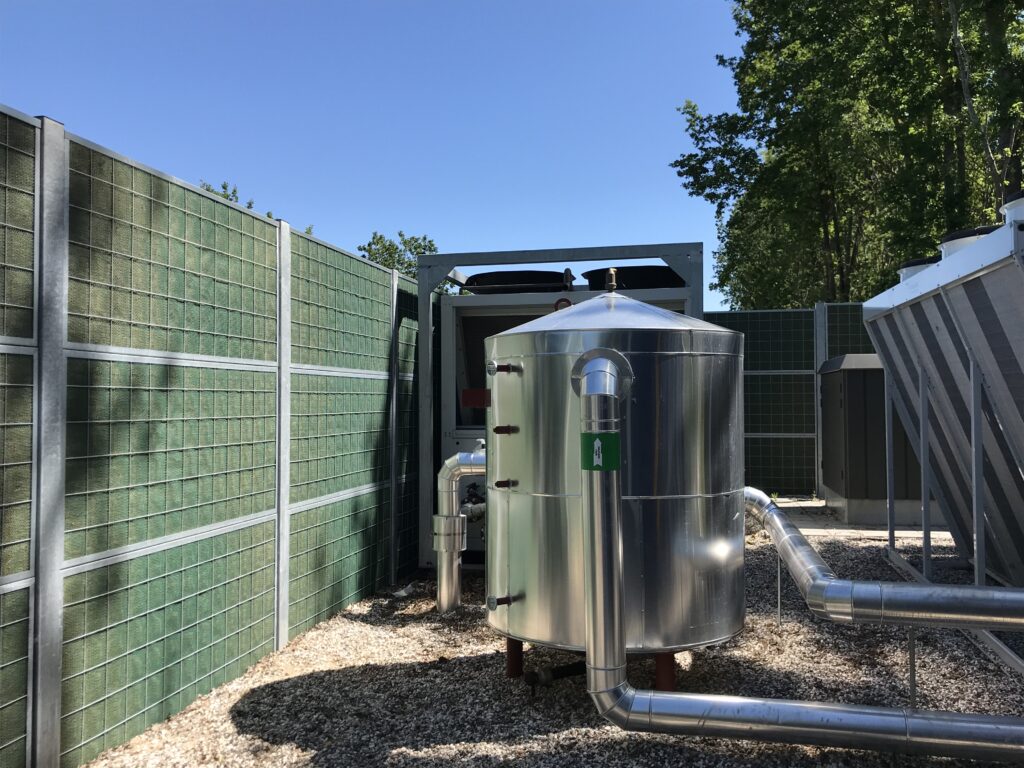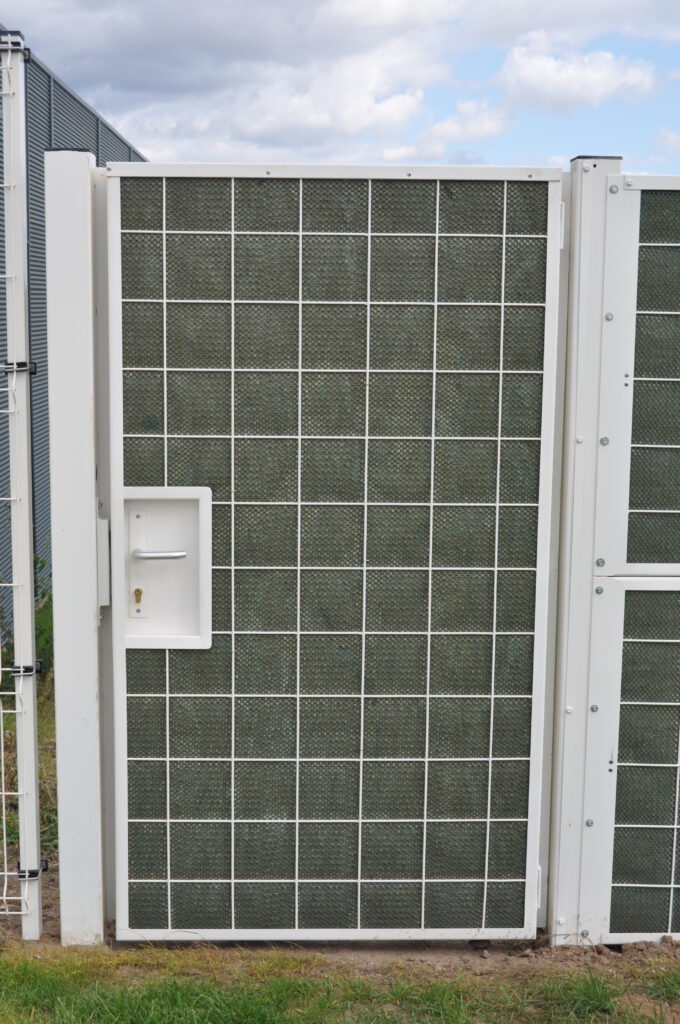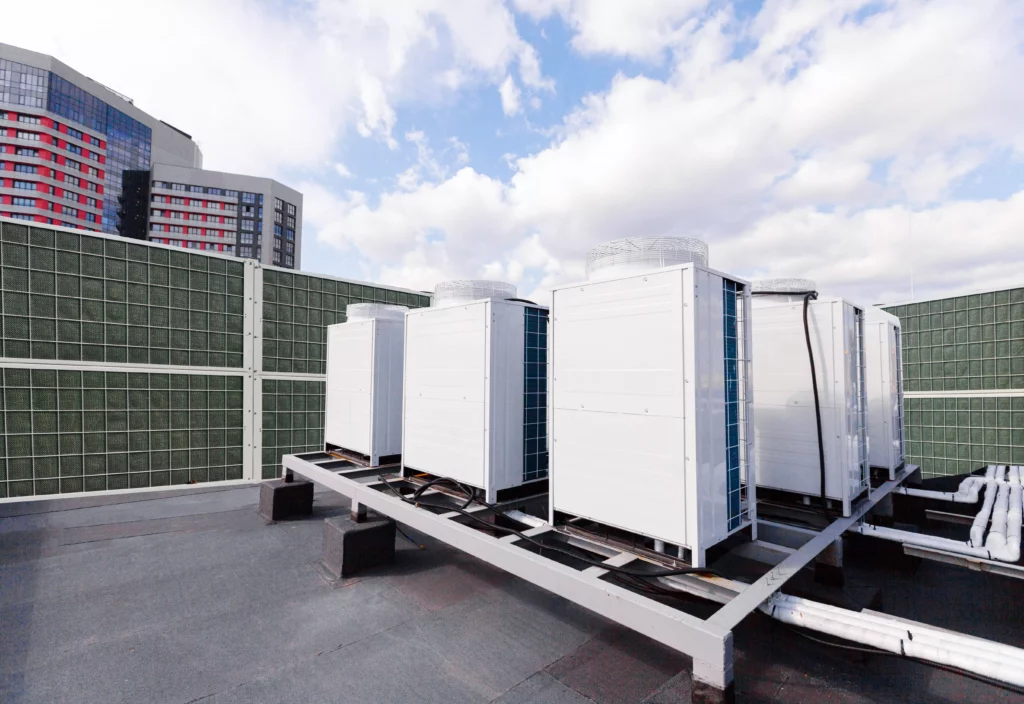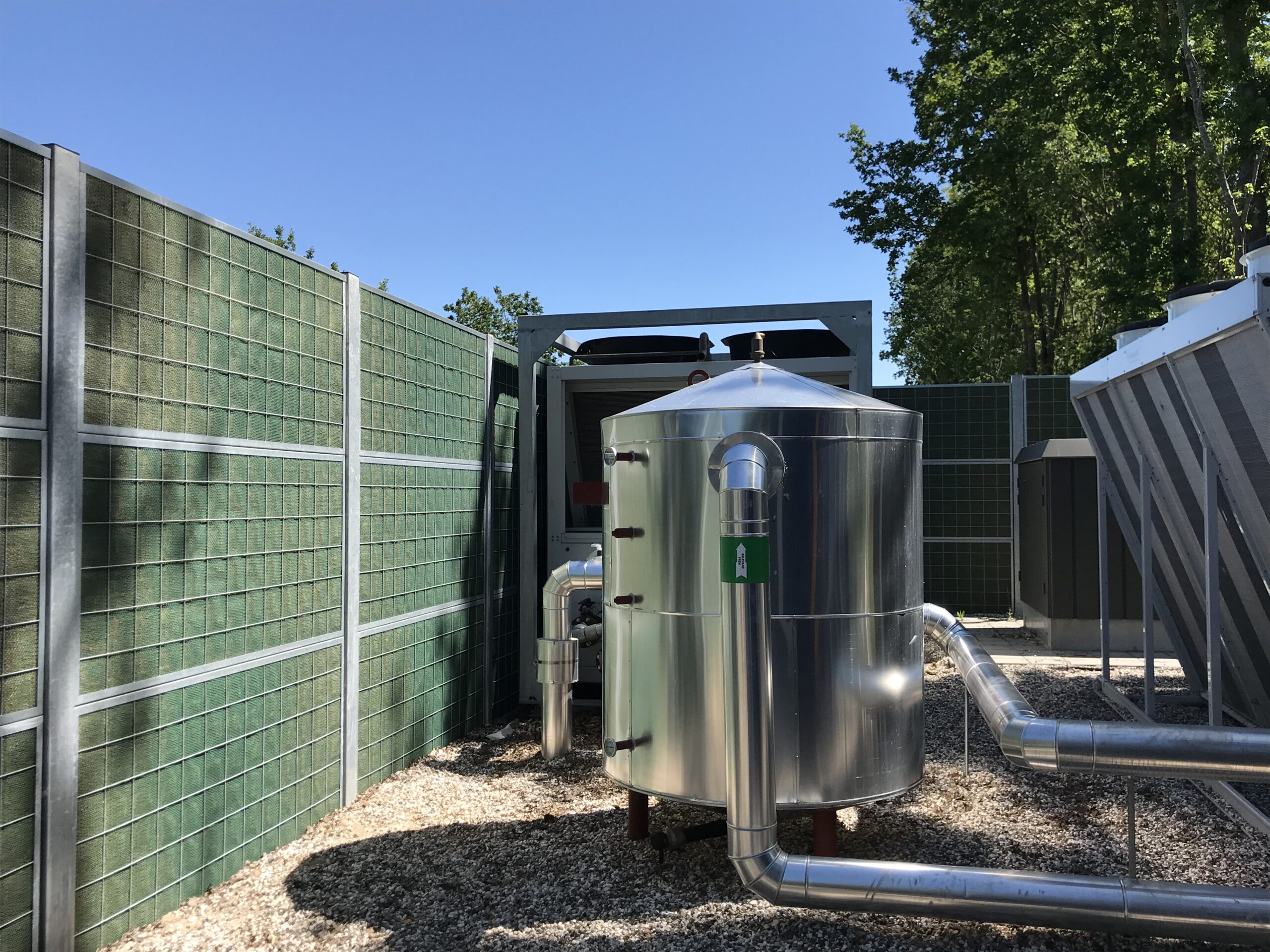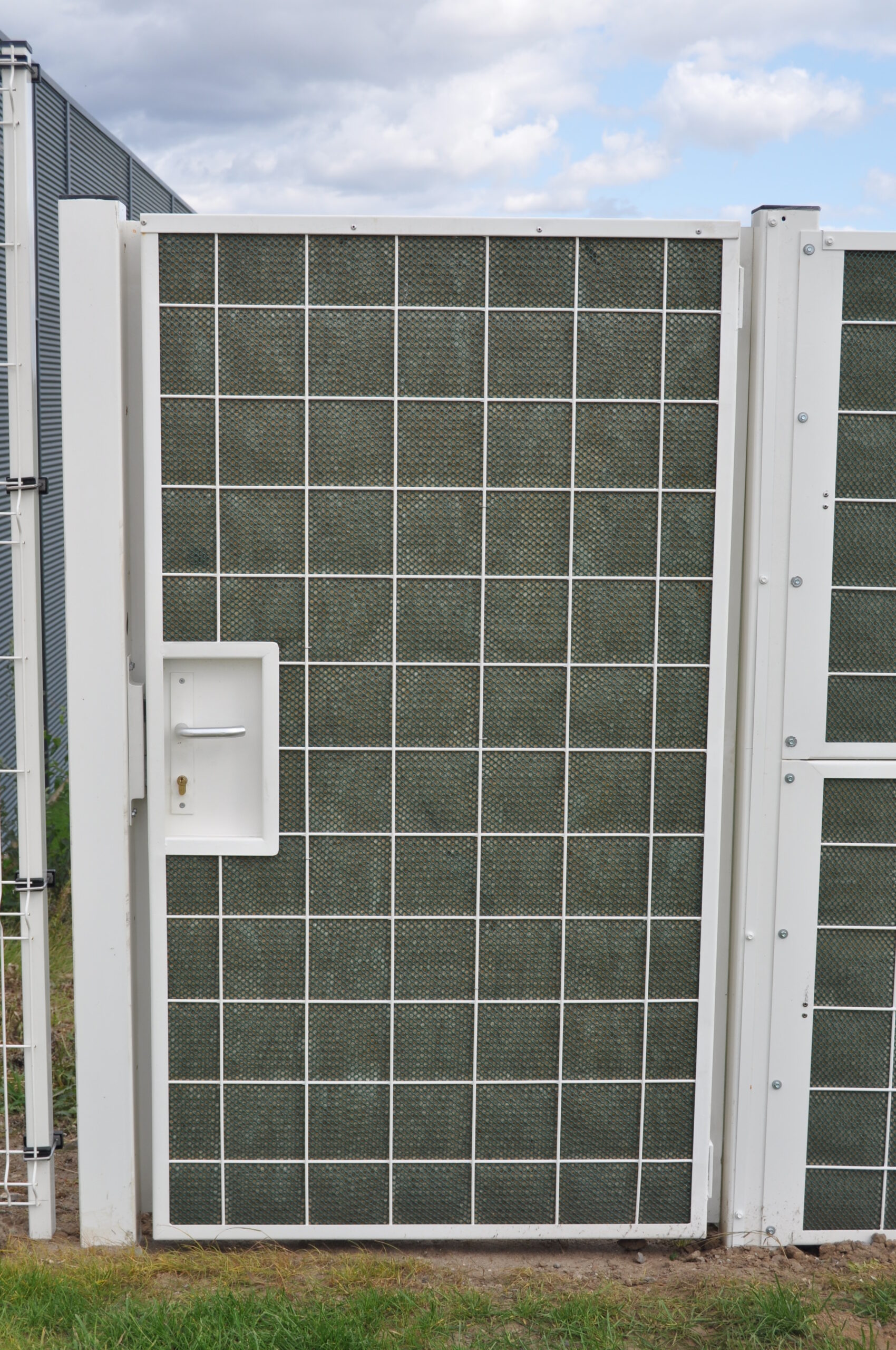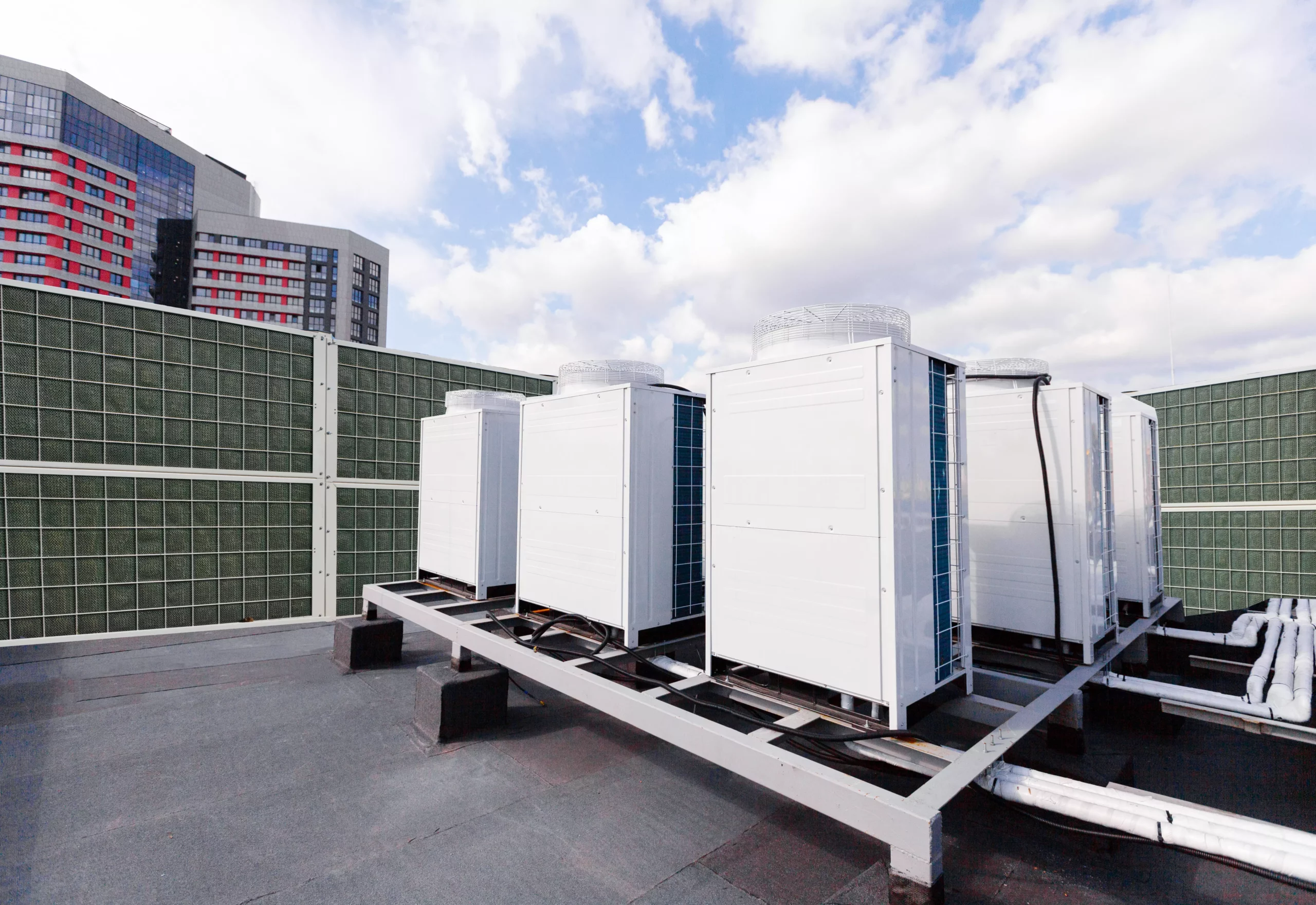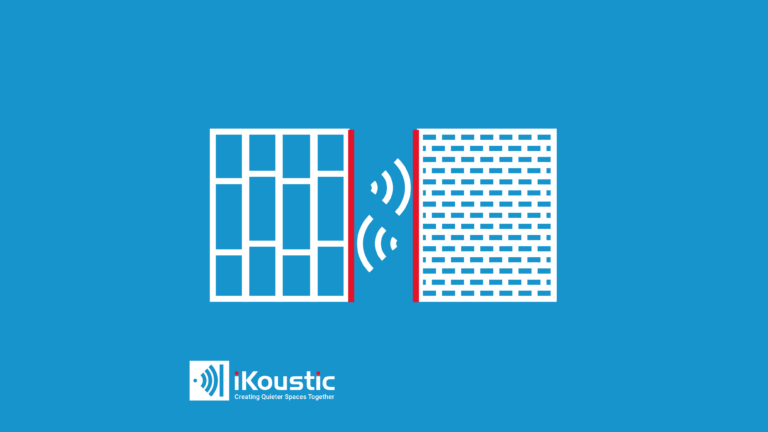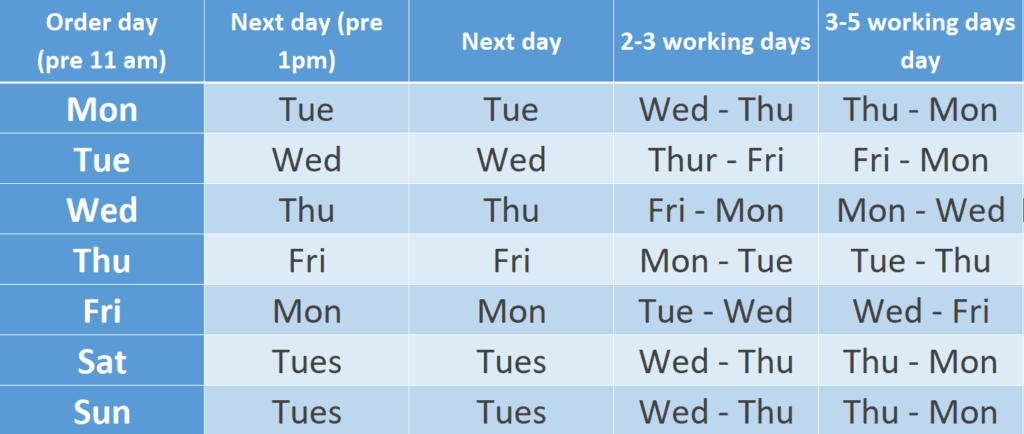Why an Acoustic Enclosure is Essential for Your Air Source Heat Pump: A Comprehensive Guide
Installing an air source heat pump (ASHP), to improve your energy efficiency can seem like a straightforward process. However, something that can be overlooked is the noise that air source heat pumps create. If you are struggling with noise from an air source heat pump, or your neighbor’s ASHP (like many other people complain about), then you need an acoustic barrier solution. An acoustic enclosure for noisy ASHP can be a clever solution to an annoying problem.
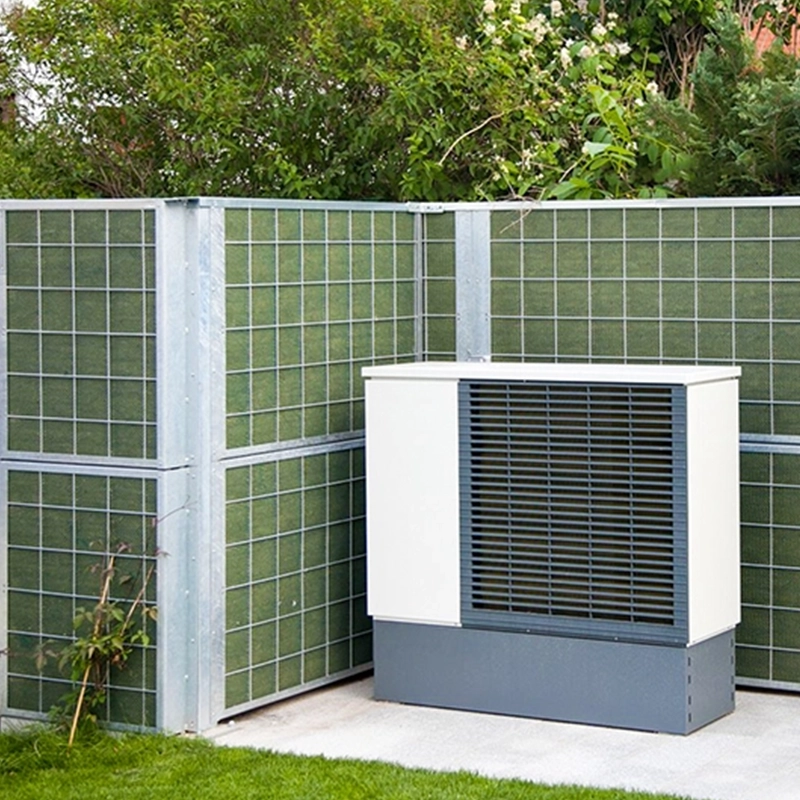
Are air source heat pumps noisy?
Yes is the short answer. An air source heat pump produces around 60dB of noise, which is the level of a normal conversation. However, when it is working harder in warm weather, the noise levels will increase. Perceived noise of the ASHP will also depend on background noise levels in your area, so heat pumps can appear nosier at night when background noise levels typically drop.
Get more information about how noisy an ASHP is here.
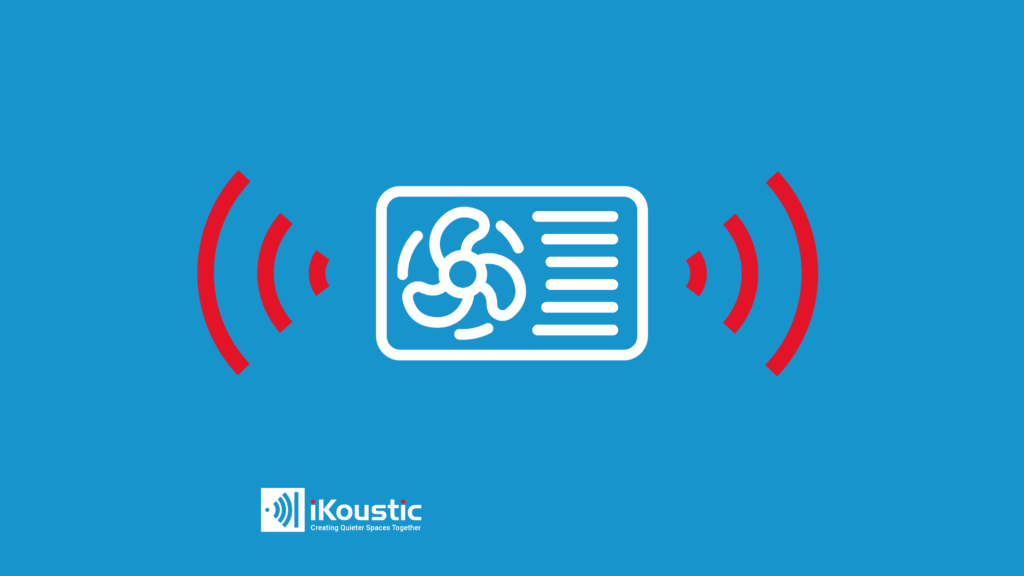
How to install an air source heat pump
To install an air source heat pump at home, you must abide by the regulations (explained fully in this post). In short you must:
1) Install at least 1 meter away from boundary lines
2) Have a calculated sound output below the MCS Scheme guidelines for permitted development
3) Install in an easy to access place
4) Ensure good air flow around the air source heat pump
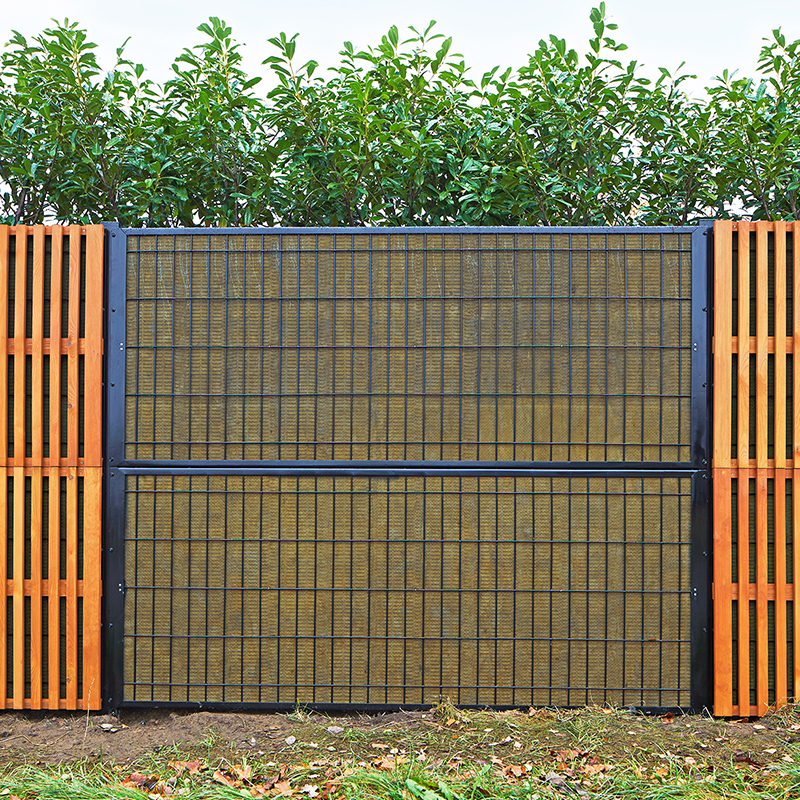
Do air source heat pump acoustic enclosures work?
Yes. A properly designed and installed enclosure can reduce the noise from your air source heat pump so that neighbors are no longer disturbed. A modular system will allow for full customisation that can properly block noise and will keep your costs lower than many other options.
Noistop Reduction Estimate
How noisy are air source heat pumps?
Air source heat pumps do produce noise when running, don’t let anyone tell you differently. In terms of how much noise an ASHP produces will depend on the model you install and where it is installed. The Department of Energy and Climate Change, commissioned a report investigating the noise created by a range of ASHP. This lead to recommendations for changes to the manufacturing of ASHP but more can be done with the addition of acoustic enclosures.
In general, an ASHP will produce around 60dB of sound [1], which probably doesn’t help you very much! For context, a normal conversation is about 60dB, so an ASHP isn’t exactly quiet. That said, it’s no way near the noise produced by a motorbike which is 95dB!
There is an air source heat pump on a property that I pass while I’m out for my lunch time walk. Whether i hear it will depend on the other noises happening that day. I’m about 5 meters from the pump and can hear it if cars aren’t passing, or the wind isn’t up. I would say that it’s much more likely to be noticeable if it’s near your bedroom and you have low background noise in your home.
Another important aspect to remember with an acoustic enclosure and sound levels, is that a difference of 10dB is perceived as a halving or doubling of noise levels (see the science of soundproofing here). So that means if you were to drop the noise to 50dB with an acoustic enclosure, your ASHP is suddenly a lot quieter!
| Everyday Sounds and Noises | Average Sound Level | Typical Response |
|---|---|---|
| Normal breathing | 10 | No hearing damage |
| Refrigerator hum | 40 | No hearing damage |
| ASHP | 60 | No hearing damage |
| Washing Machine | 70 | Somewhat annoyed |
| City Traffic | 80-85 | Very annoyed |
Noise from air source heat pump
In terms of the type of noise from air source heat pumps, I would describe it as very similar to an air-conditioning unit. The noise levels from ASHP will depend on the model and it’s position but also on the conditions. If your air source heat pump is operating at maximum capacity then you will usually find that the noise is louder.
You should be able to find the running noise dB from the ASHP provider in the manual. You’ll need this when it comes to checking whether you need planning permission for your ASHP.
What is the best location for an air source heat pump?
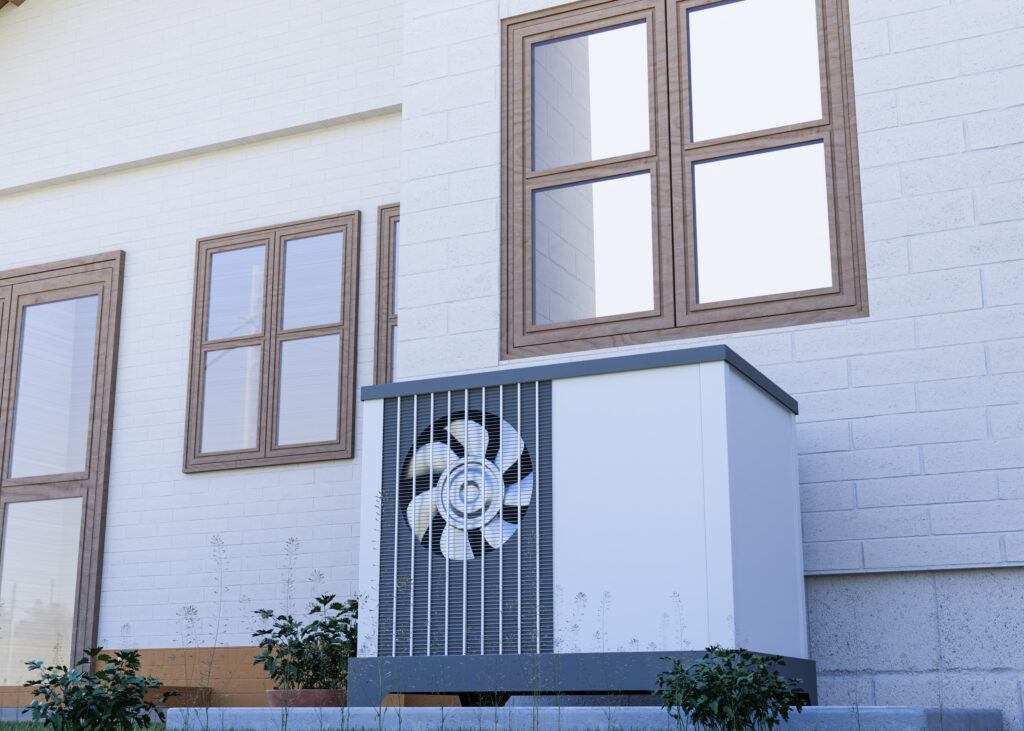
Before jumping to purchasing an acoustic enclosure, consider the best location for your ASHP. There are rules and regulations surrounding the location of it, but we will come to those later. For the best location you need to think about;
- Distance from neighbours habitable rooms
- Good air flow (not a tightly constrained space)
- Area with plants at a minimum of 1 meters away
- Easy to access for servicing
Air source heat pump noise regulations UK
In the UK, there are strict regulations on where you can install your ASHP. This is to ensure that you do not create unreasonable levels of noise pollution that could disturb your neighbours. For this reason you mustn’t install an ASHP closer than one meter to the boundary line. For Wales this is actually 3 meters away and there are other regulations to meet besides just distance.
You may have come across the MCS Scheme for air source heat pump noise standards by now. The MCS Scheme, while seemingly simple, has gone on to cause issues after installation. Due to the method of calculation (see below), an incorrect figure can be easily obtained. This leads to noise complaints, post installation, and then a full BS4142 sound test.
Problems with the MCS Scheme noise calculator for air source heat pumps
The MCS Scheme was introduced to provide regulations that before were totally lacking. This went some way to ensuring a degree of forethought had to be given to an installation in regard to the impact it has on the area.
The MCS 020 provides a simple noise calculator for ASHP, that tells you if you are below or above the cut off for permitted planning permission. If you are above, it will mean you certainly need some sort of acoustic enclosure for your air source heat pump. However, if you are below, you may be allowed to use permitted planning permission.
The problem is that the calculations assume a background noise level of 40dB. This is problematic as a house in the countryside is treated the same as one in a busy city. It is therefore possible for areas with a quieter background noise level to achieve a ‘pass’, when in fact the system should have failed.
Furthermore, the MCS Scheme also expects the air source heat pump to produce no more than 42dB output from this calculation. This is a blanket number for up and down the UK, and should be taken from the maximum calculation obtained, (usually when the pump is working harder in heat). However, different council planning departments set different noise pollution limits, which means the MCS Scheme has more inaccuracies.
After installation, with the ASHP being nosier than originally assumed for that environment, neighbours often lodge noise complaints. The council then has to step in and a BS4142 noise assessment is usually carried out. A BS4142 is a British Standards test and will take place on site, measuring the actual background noise levels, as well as, the actual sound output from the heat pump.
If this is failed, then you will need to retrospectively install an air source heat pump acoustic enclosure. You may wonder why more people don’t simply carry out a BS4142 test before installation, to avoid all this upheaval, however, the test costs in the region of £1,500. That said, failing after installation of your air source heat pump is far more costly, as well as stressful.
This is why it is fair easier, and cheaper, to correctly fit an acoustic enclosure with your ASHP and avoid additional costs. This removes a lot of the ambiguity and means you’ll be able to rest easy after your heat pump is in operation!
Do I need planning permission for my air source heat pump?
You may now be wondering if you need planning permission and you do, but only if you cannot meet all of the criteria set out in the 2011 planning regime. Should you meet all criteria that you have what’s called ‘permitted planning permission’ and can install your ASHP without an application. However, this figure is not always accurate, as discussed, so consult a specialist for further advice.
To calculate if you need planning permission for your ASHP, see this video below and quickly get your answers!
ASHP noise reduction
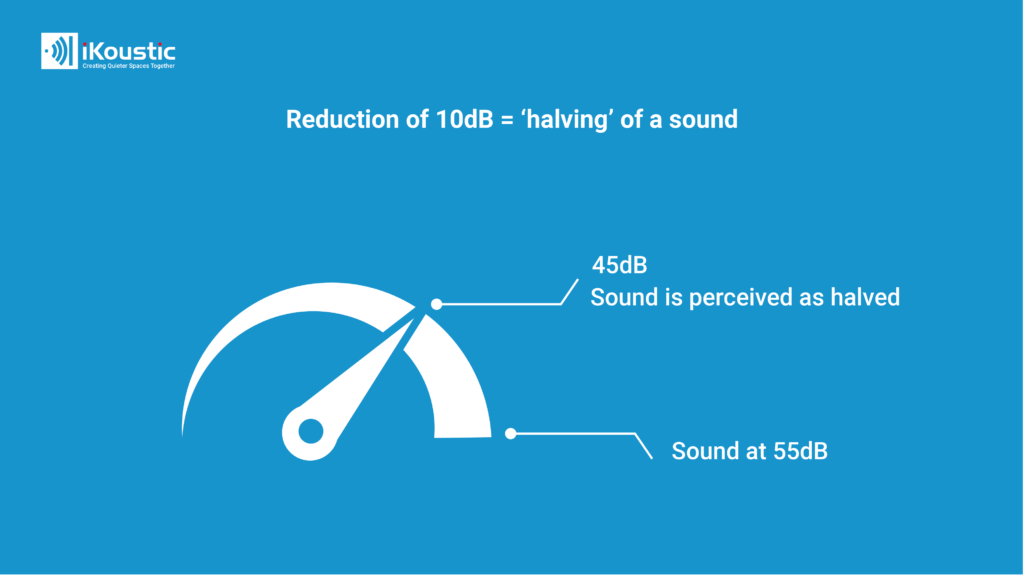
Ok, so if you have already installed your ASHP and now need a reduction in noise from your ASHP, then you need an acoustic enclosure. An acoustic enclosure for your ASHP will reduce the sound that is able to travel away from the source.
If you are here because of the noise from your neighbours ASHP, then the acoustic enclosure we will look at can work as an acoustic fence for you, however, it is always more effective to treat noise at the source. Also, it will be far cheaper in materials that need to be bought.
An acoustic enclosure for an ASHP works by both reflecting sound and absorbing sound. The acoustic enclosure needs to do this so it can effectively reduce airborne noise by preventing sound escaping and absorbing sound that cannot be reflected.
How an acoustic enclosure works
The acoustic enclosure for ASHP, or acoustic fence, works with a blend of soundproofing materials. The acoustic enclosure is made of a mix of highly absorbent acoustic mineral wool that insulates against the noise and has a steel frame to reflect sound as well.
Enclosing your ASHP in this acoustic enclosure effectively traps the soundwaves before they can travel into your house, garden, or, through the fence to annoy your neighbours. For soundproofing to work at it’s best, we need high mass materials as a high mass reflects soundwaves. Reflecting sound is incredibly important, it’s like locking the noise into a small space.
However, while a high mass material is brilliant for reflecting sound, it is not good at absorbing it. We need to add acoustic mineral wool to the acoustic fence to ensure that the reflected sound cannot create an echoed, amplified area. The absorption changes the energy from sound to heat and dampens the noise levels.
An acoustic enclosure is like creating a little box that all at once traps sound inside it and makes it quieter. The effect of an acoustic enclosure around an ASHP can transform your garden from restless to peaceful.
Air source heat pump vertical enclosures
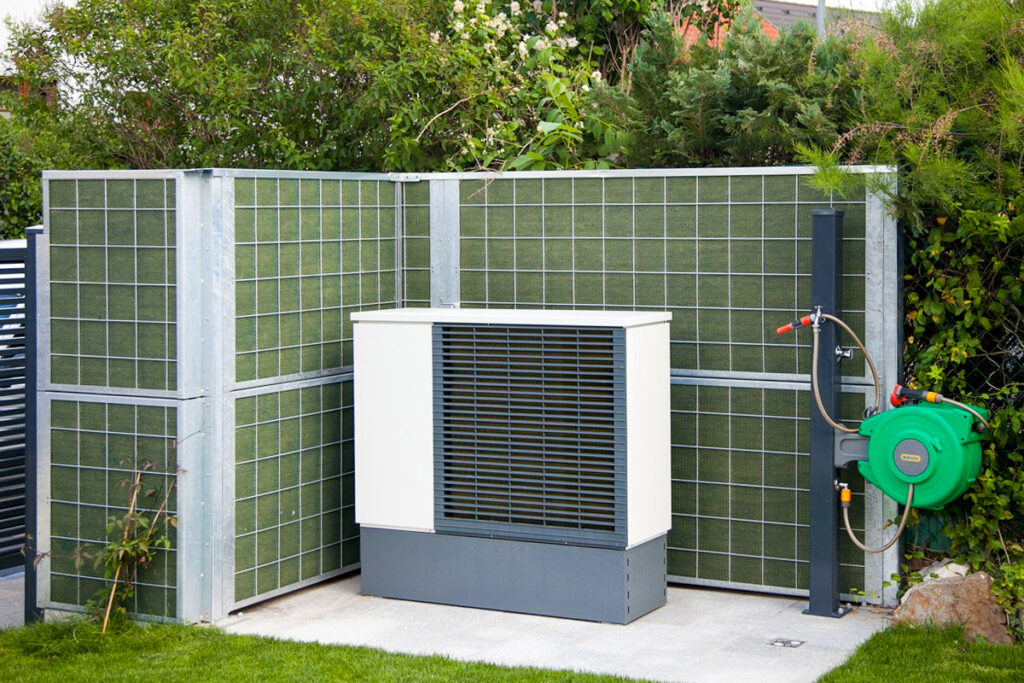
The type of acoustic enclosure that we recommend for ASHP are modular and can be easily built around your ASHP. The highly modular acoustic fence allows for total customisation for your specific location and access needs. It also means you can work with an acoustic technician to ensure the placement of your acoustic enclosure is the best it can be.
Building up around your ASHP with a vertical enclosure means you still retain excellent air flow around the heat pump and make no impact on the running of it. Our ASHP vertical enclosures allow for a quick build as the acoustic enclosure comes in panels that can be stacked for added height, cut for bespoke fitting and easily joined together.
Can I soundproof my air source heat pump retrospectively?
If you have already installed your noisy ASHP and realise you need soundproofing, then don’t worry! It can be a real shock to pay for the ASHP and installation only to discover that the costs keep on coming. However, with the acoustic enclosure we recommend, it can be easily installed retrospectively and still soundproof your air source heat pump.
You will not need to move your ASHP or add a vibration absorption panel beneath it. Instead our acoustic enclosure system is built panel by panel in a configuration that will provide the maximum soundproofing and also easy access.
Acoustic enclosure V/S Acoustic fence
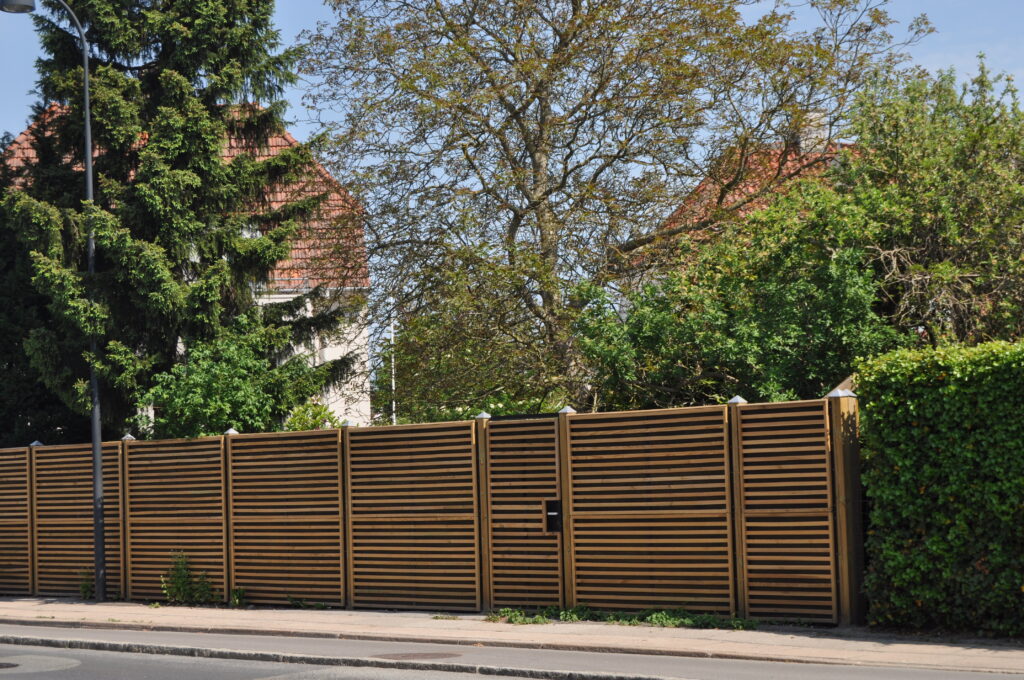
An acoustic enclosure works in the same way as an acoustic fence. The acoustic enclosure system for ASHP that we use is the same system as our acoustic fence. This is because the acoustic enclosure is made of modular panels that can be easily customised to heights of 3 meters (should you wish!), and joined together to create long perimeters.
Creating a specific acoustic enclosure for your ASHP will perform better than if you build an acoustic fence around your garden. It is always better to treat sound at the source, so, if the air source heat pump is yours, then create an acoustic enclosure for the pump. This will trap the noise at the source instead of allowing it to travel around the garden.
Should you be struggling wiht noisy neighbours, then an acoustic fence is a good way to reduce airborne noise. You should always take care when installing any acoustic fence to make sure it is in the right place! See our other blog about acoustic fences here.
Can I cover my air source heat pump?
No! Don’t ever cover your ASHP as you need to ensure a good air flow to the pump. Remember that it needs a minimum of 1 meter clear space around it. This is because the ASHP sucks air in from the back and sides, then pushes out cool air from the front.
If you were to cover your ASHP to reduce the noise, you will damage the pump and potential cause a fire hazard, too. This is why an acoustic enclosure if an effective and safe way to soundproof your heat pump. The acoustic enclosure still allows good airflow around the unit and creates an acoustic barrier to dampen the noise produced.
Are acoustic enclosures ugly?
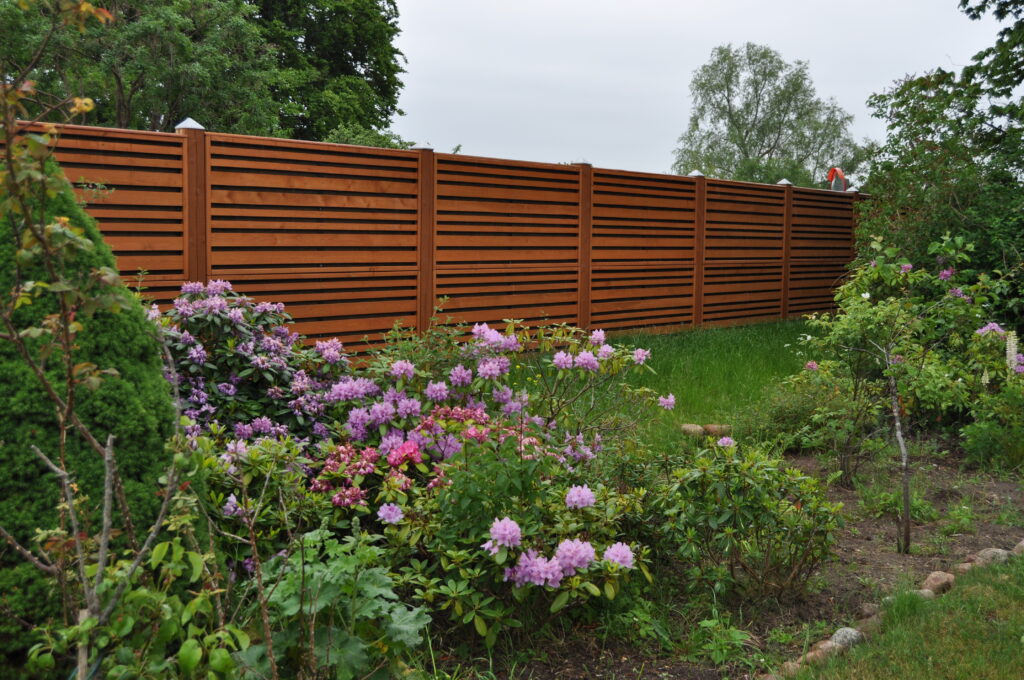
Certainly not! You have a wide variety of finishes to choose from with acoustic enclosures and fences. The acoustic fence we offer can be finished as galvansied steel or coated steel. You can also have a wood clad acoustic fence finish that is in keeping with most gardens. The acoustic fence lends itself to a green wall structure, too. The webbing of steel is the perfect surface for climbing plants to grab on to!
How long will my acoustic enclosure last?
The materials in our acoustic enclosure panels are guaranteed for 30 years – over twice as long as an ASHP! This is because the acoustic enclosure system is made from acoustic mineral wool which is resistant to rot, moisture and mold. The frame is a protected steel frame, too, so it will stand the test of time much better than your standard garden fence.

Noistop Essential – Permanent Acoustic Barrier
How big do I need my acoustic enclosure to be?
This is a really important question to answer, and get right. That’s why it’s best to consult soundproofing experts and get the correct size and configuration for your ASHP. Here at iKoustic, our technical support team will be able to tell you how big the enclosure should be and how it should be designed.
This will ensure the best soundproofing for your ASHP and allow the acoustic enclosure to perform at its best for you. Soundproofing is a science, so if you can, always consult an expert!
How to install an ASHP acoustic enclosure
If you’d like advise on the installation of your acoustic enclosure, then we have installation guides available for our acoustic fence panels. We also have a directory of installers, to make it easy, who are confident and capable of installing an acoustic enclosure around your ASHP.
Download the installation guide for your acoustic fence panels.

